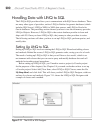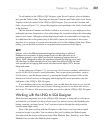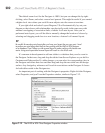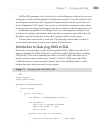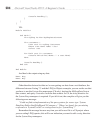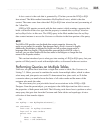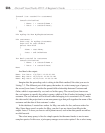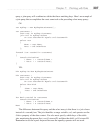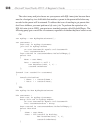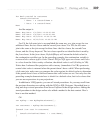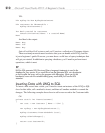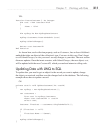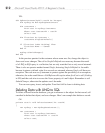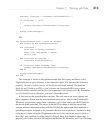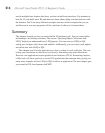
208 Microsoft Visual Studio 2010: A Beginner’s Guide
The select many and join clauses are synonymous with SQL inner joins because there
must be a foreign key in a child table that matches a parent in the parent table before any
records for the parent will be returned. To address the issue of needing to get parents that
don’t have children, you must perform a left outer join. To perform the equivalent of a
SQL left outer join in LINQ, you must use a standard operator called DefaultIfEmpty. The
following query gets a record for all customers, regardless of whether they have orders or not:
C#:
var myShop = new MyShopDataContext();
var customers =
from cust in myShop.Customers
join ord in myShop.Orders
on cust.CustomerID equals ord.CustomerID
into customerOrders
from custOrd in customerOrders.DefaultIfEmpty()
select new
{
Name = cust.Name,
Date = custOrd == null ?
new DateTime(1800, 1, 1) :
custOrd.OrderDate
};
foreach (var custOrd in customers)
{
Console.WriteLine(
" Name: " + custOrd.Name +
" Date: " + custOrd.Date);
}
VB:
Dim myShop As New MyShopDataContext
Dim customers =
From cust In myShop.Customers
Group Join ord In myShop.Orders
On cust.CustomerID Equals ord.CustomerID
Into customersOrders = Group
From custOrd In customersOrders.DefaultIfEmpty()
Select New With
{
.Name = cust.Name,
.Date = IIf(custOrd Is Nothing,
New DateTime(1800, 1, 1),
custOrd.OrderDate)
}



